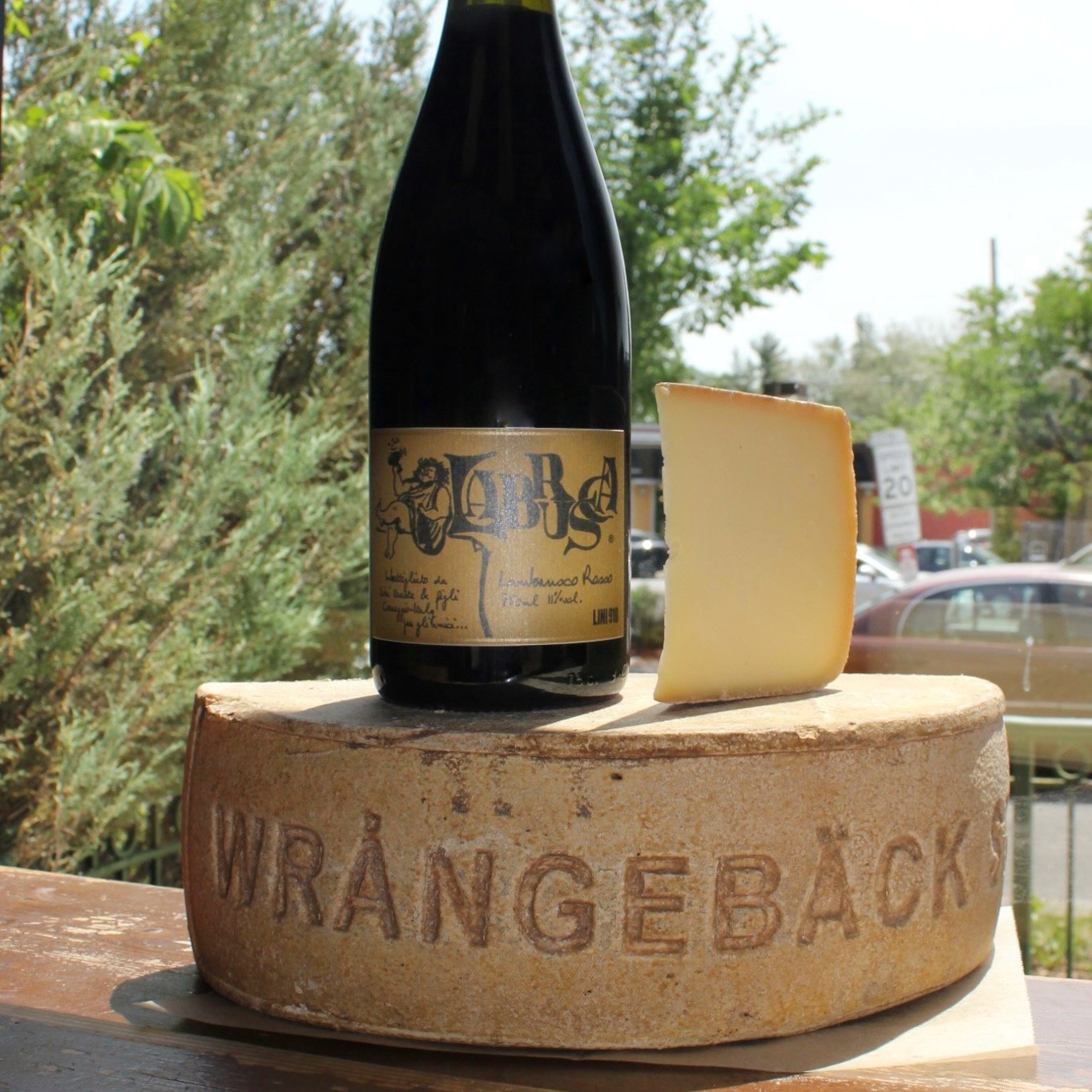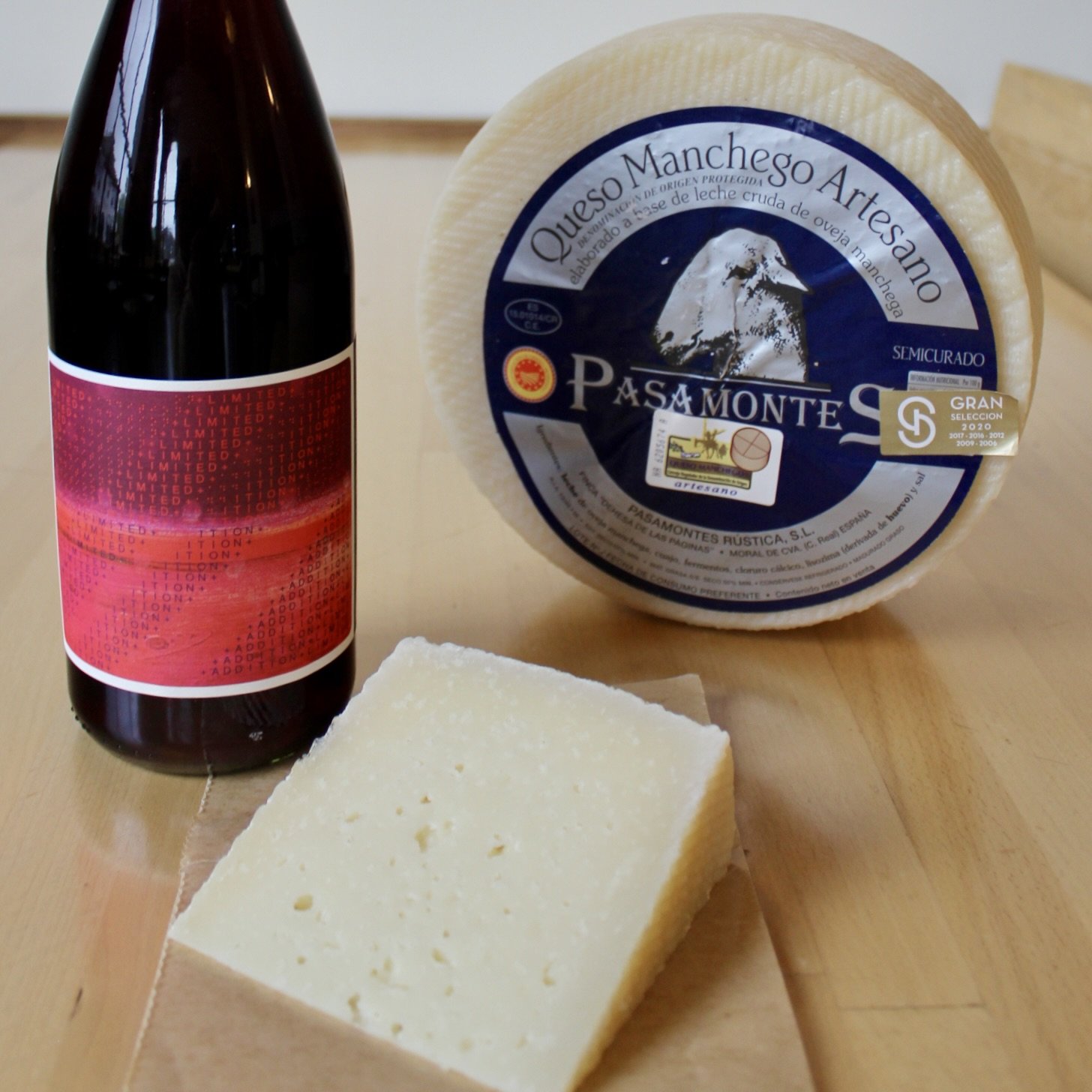By Austin Coe Butler
This hybrid between a creamy pasta salad and a panzanella, a bread and tomato salad with a tangy vinaigrette, is the perfect dish to bring to your next cookout, picnic, potluck, or block party. It’s bright, creamy, tangy, refreshing, and, best of all, will guarantee you leave with a nice empty bowl that’s easy to clean. It’s best made in advance, great at room temperature, easy to scale up, and simple to modify for the occasion.
I want to thank the customer that shared with me the inspiration for this recipe. (You know who you are!) Last weekend we featured our custom washed Grillin’ Cheese from Blakesville Creamery that is washed in Dampfwerk’s Barrel Aged Gin. It’s a Croatian inspired cheese that is essentially a puck of chèvre wrapped in grape leaves that have been soaked in a spirit. This cheese is a favorite of this customer’s daughters, and it’s always a joy when I see them picking it up. While we were talking at the cheese counter he mentioned that he had substituted the Blakesville Grillin’ Cheese for halloumi in a New York Times recipe by Yossey Arefi for orecchiette salad with halloumi croutons. In addition, he had removed the cilantro, red onions, and arugula, and added in bread croutons. The judgment of his daughters? This version was even better! And it was even better the next day! This is how great recipes are born.
1 pt cherry tomatoes, quartered
4 tablespoons extra virgin olive oil
2 tablespoons red wine vinegar like La Guinelle Vinaigre de Banyuls
Kosher salt
Black pepper
8 ounces orecchiette or other small pasta
1 Blakesville X Dampfwerk Grillin’ Cheese
1 bag France 44 garlic crostini
3 Persian cucumbers or 1 English cucumber deseeded
2 cups arugula (optional)
½ cup chopped cilantro or parsley
½ cup chopped mint
¼ finely chopped red onion (optional)
Add the tomatoes, 2 tablespoons of the olive oil, red wine vinegar, salt, and pepper in a small bowl and leave them to marinate while you prepare the rest of your ingredients.
Bring a large pot of salted water to a boil.
Grill or pan fry the cheese. Grilling the cheese is a great option because it imparts smoke to the cheese, otherwise, pan frying it works great, too. You’re looking to heat the cheese through and soften it. I did this directly over my gas burner on low heat, flipping it from time to time, for about 5 minutes, just to get some char. Once soft, remove it from the grape leaves, add it to a large bowl, and mash it into a paste.
Cook the pasta. It’s especially important with pasta salad to cook the pasta al dente, usually about 2 minutes short of the manufacturer's recommended cook time. Often the pasta in pasta salads has been obliterated—it’s soft, mushy, slimy, and disintegrates. Al dente pasta is also “thirsty” and will soak up the vinaigrette. Once cooked, strain the pasta and add it to the large bowl along with the tomato vinaigrette. Stir to combine the pasta, tomatoes, and cheese.
Add all the remaining ingredients to the large bowl and stir to combine. The mixture will seem a little stiff, so feel free to add more olive oil and vinegar, but give it time to rest while the pasta and crostini absorb the liquid and soften. What’s great about the addition of the crostini is that since they are toasted, they don’t turn to mush the way fresh or even stale bread does when it soaks up liquid. Instead, it retains its shape and a bit of spring, providing a nice chew and even a bit of crunch the next day.
While this pasta salad will be ready to go as soon as you make it, I suggest letting it sit overnight. If you would like to add the arugula, add that on the day of serving so it doesn’t wilt along with a few more freshly chopped herbs and a scattering of crushed crostini for crunch.









